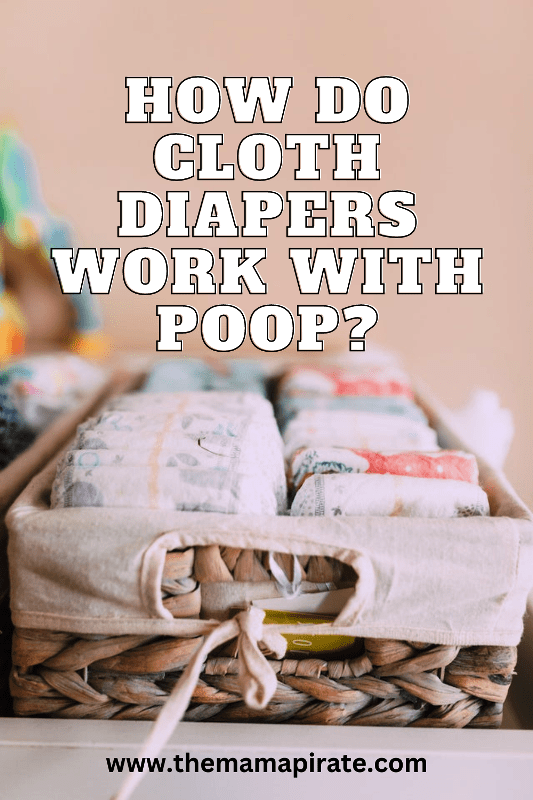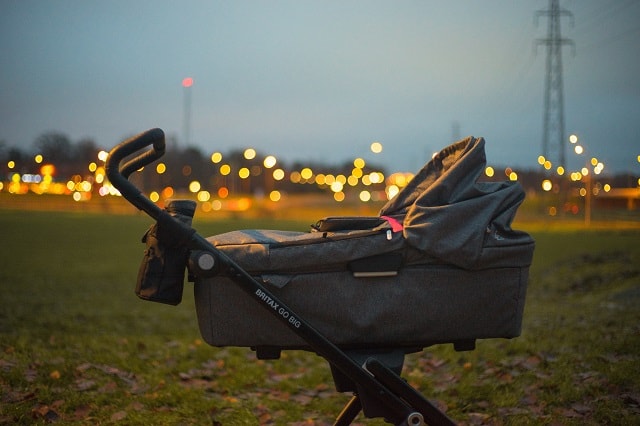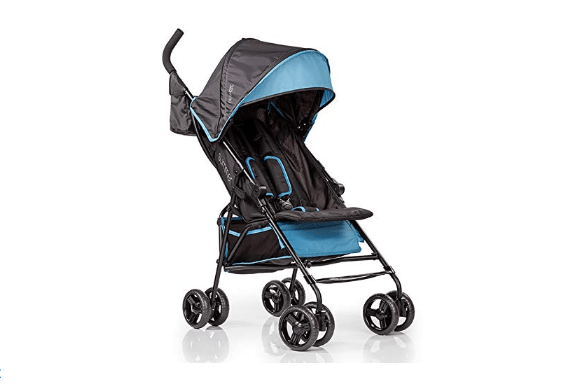Many parents misunderstand cloth diapers as a hassle, mess, and expense. Some mothers resist switching from disposable to cloth nappies, and the fear is understandable. However, this is the best match for many babies. With technological advancement, cloth nappies have come a long way from our great granny’s generation. They are available in different styles, sizes, and brands. Quitting paper diapers is easier than you think. Check out our guide to learn more about different types of cloth diapers, estimated costs, and proper usage.
Types of cloth diapers
Cloth diapers have come a long way. There are many options and styles out there that work no matter your baby’s body type or activity level; you can find every type of cloth diaper. If you are looking for an easy-to-understand explanation of how to use cloth diapers, here is what you need to know about the most popular options.
- Flats
These diapers are the epitome of basic. They are similar to what your grandmother’s great-great-grandmother probably worked with when she swaddled their baby. A flat is a large square of fabric, usually bird’s eye cotton, but there are other varieties, such as hemp, bamboo, and even terry cloth.
To use the flats, you have to fold them. There are several types of folding, from very easy to more origami-like. They can be pushed or held together by pins or other fasteners. A waterproof diaper cover is required on top to hold wet items.
They are lightweight, easy to wash, dry, and use. It is also the most affordable cloth diaper option due to its low cost and ability to fold to fit any size baby, from newborn to diaper age.
- Folding cloth diaper
Pre-folded diapers are the rectangles of cloth you think of when you think of old-fashioned cotton diapers. They are folded and sewn using more layers in the middle, creating a thicker center. Pre-folded diapers, such as bamboo and hemp, come in different fabrics and sizes. Starting at about $2 per sheet, pre-folded diapers are the foundation of the most affordable cloth diaper options.
You will still need to get your hands on a cloth diaper cover – a waterproof outer layer that retains wetness and dirt on the inner part. The most popular covers mimic the shape of disposable products and are pre-folded. They are usually made of a poly-blend fabric with a waterproof laminate inside and come in all colors and prints. When it is time for a diaper change, you can replace the dirty pre-folded with a new one (wipe it down if necessary) and reuse the cover, saving laundry. To ensure that the folded stays in place, you can use another integrated elastic fastener, Snappis, in addition to snaps or Velcro. Before going to bed, many parents double the pre-folded or add a soaker cloth insert to keep them leak-free through the night.
- One-size cloth diaper
Believe it or not, there are one-size-fits-all diapers that grow with your baby, so when your 8-pound newborn grows into a toddler, you can use the same diaper with snaps or Velcro. Adjustable size and progressively larger inserts accommodate changing absorbent needs. All these options have one thing in common. A wide range of bright colors and adorable designs, from punk rock skulls to fire trucks to mustaches. It is also pricier, with high-end mainstream brands ranging from around $18 to $30.
- All-in-one cloth diaper
This diaper has a waterproof cover with an absorbent pad, so you can easily change diapers like paper. The adjustable closure attaches to the hips with Velcro, snaps, or hook and loop, and no additional panels are required. No diaper installation or assembly is required. Remove the diaper and replace it with a new one. Rinse solid waste after each use and place it in the washing machine with other soiled diapers. On average, a parent pays a little more for the convenience of an all-in-one diaper, from $15 to $25. These also tend to be bulky and may take longer to dry than just pads or pre-folded cloth diapers.
- All-in-two cloth diapers
Another option is an all-in-two cloth diaper that resembles an all-in-one cloth diaper but includes a removable liner. Since the insert and cover can be washed and dried separately, there is more flexibility when it comes to washing. These diapers are a little more expensive, around $20 to $25.
- Hybrid cloth diapers
If you do not like removing baby poop, you can use this option to wash it away. Combining disposable and reusable diapers, hybrid cloth diapers feature a waterproof outer layer and two inner options for absorbency. Some parents use cloth inserts available in cotton, linen, and microfiber fabrics.
How to get started with cloth diapers?
How do you get started with cloth diapers? Parents can have several questions if they switch from disposable ones. You can visit a store, whether it is a big chain store or your local baby boutique. Take help from other parents that you know. Experience is the best teacher, and you can always benefit from others’ mistakes.
Many expectant parents buy products from a reputed brand only to learn later that it does not suit their baby. Your baby’s skin and needs differ from the rest of others. The best way to choose the right product is to hit & trial. Only buy a little of the same brand before trying and testing it out.
As with any new baby clothes, you should wash the newly purchased nappies before using them. Set the machine cycle to high with mild detergent. Do not use a detergent to wash your clothes, as it may be harsh for the baby.
What is the right way of washing cloth diapers?
After removing the cloth diaper, put it in the storage container. Some parents put the diaper in a bucket of water and let it soak before washing. Others flush the solids down the toilet and throw the diaper in a plastic-lined bucket after changing. It has two advantages. One, your machine does not smell due to dirty nappies. Two, the diapers are wet in the bucket, so you have the advantage of rinsing and soaking them for a bit. It is helpful to keep a bucket of cloth diapers in the bathroom when using this method.
Here’s how to wash a cloth diaper:
- Remove pads from pocket diapers.
- Start with a cold, detergent-free rinse.
- After a cold rinse, run your normal cycle with warm water and 1/4 cup of detergent.
- Then perform an extra cold-water rinse to ensure all detergent residue is thoroughly washed away.
- Set the machine to the highest possible cycle.
- Tumble dry at high heat or line dry (depending on the material).
- If you are using a cloth nappies detergent, refer to the instruction set at the back.
What is the price of cloth diapers?
Cloth diapers save a lot of money. However, the initial cost can seem intimidating, but these savings are in the long run. Cloth diapers initially cost between $200 and $800. Please note that cloth diapers of different styles and brands will cost different. Second-hand diapers are cheaper than new ones.
On average, babies get potty trained by the time they reach two years of age. Many babies can take a long time as well. In these two years, parents spend approx. $1,350 on disposable diapers. You can save $550 by using cloth diapers and wipes. Savings are bigger with your second child. You can reuse the cloth nappies and towels you bought for your first one.
How to choose the right diaper for your baby?
While choosing the correct diaper for your baby, you should factors such as your budget, time, diaper features, lifestyle, and more.
- Diaper Features
Diapers should be able to hold a lot of urine and feces without leaking or dripping. Leaky diapers can expose your baby’s skin to moisture, which can lead to irritation and diaper rash. The baby’s skin is delicate so the material of the diaper is very important. Make sure the diaper is made of a soft, breathable material that does not block airflow to your baby’s bottom.
Another important feature to look for in diapers is stretchability. It should be stretchy enough to fit your child comfortably without wrinkling or staining the skin.
- Budget
Knowing your baby’s pooping habits can help you estimate how many diapers you will need each month and how much money you are likely to spend on diapers. A higher price does not always mean better quality, so it is a good idea to focus on features over price. Handy tip is to buy a minimum pack of 2 or 3 diaper brands and try them on your child. Once you find a product that suits your sensitive skin, you can opt for a more affordable package.
- Lifestyle
Knowing your baby’s pooping habits can help you estimate how many diapers you’ll need each month and how much money you’re likely to spend on diapers. A higher price doesn’t always mean better quality, so it’s a good idea to focus on features over price. Once you find a product that suits your baby’s sensitive skin, you can opt for a more affordable package.
How many cloth diapers do you need?
According to experienced parents, 24 is a good number of cloth nappies to start your journey with. The baby can initially wet up to 15 nappies in a day. So, you will have to wash two to three times in seven days. It does not put a lot of household stress on the new mother or anyone else in the family.
Babies change clothes eight to ten times a day. Utilize this transition to try out different brands, shapes, and sizes of nappies. It will help you find the best fit for yourself and the baby. Buy in bulk only when you are sure about the product. Even when you are sure, 35 is a good number to keep in the wardrobe. It will provide more flexibility and also prevent wastage.
Are cloth diapers good for the environment?
A report by the Environmental Protection Agency reveals that disposable diapers comprise 7 percent of the non-durable waste in landfills. They are mostly non-biodegradable, irrespective of what the brands claim.
However, cleaning cloth diapers uses energy and water resources, making them less environmentally friendly. Cleaning requires energy and water and introduces chemical cleaning agents into the environment. Laundry services use machines that consume a lot of power and gasoline. Whether the impact of cloth nappies is less or more on the environment depends on how they are washed. Use detergents with fewer chemical contents and reuse the cloth nappies. These small steps will reduce their negative impact on the environment.
Final words
The final decision of the one being better from cloth diapers or disposable diapers comes down to your personal preferences and what suits your baby. It is good to listen to others’ experiences. However, every parent has a unique journey. No one else can recommend which is better for your baby because you have to decide this. Try on and test it for yourself.
MORE POSTS: How To Clean Airforce Ones At Home?

MORE POSTS: How to make planters from old jeans?



